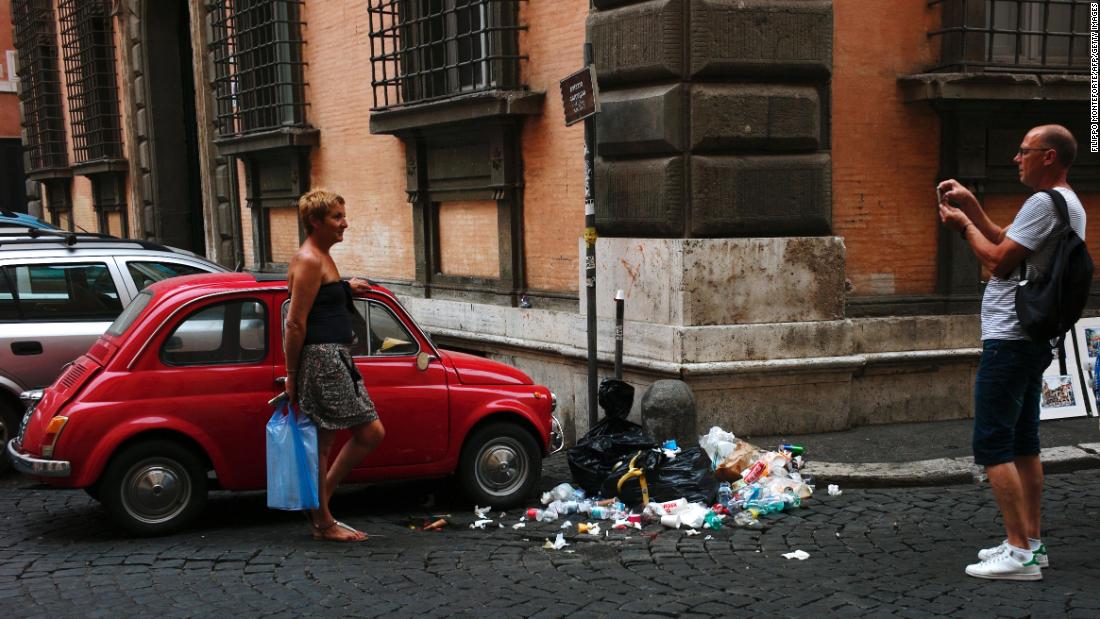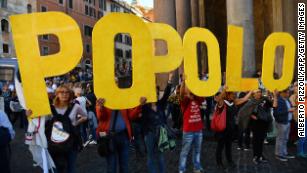Rome's sad decline sums up Italy's problems
Rome (CNN)Few cities in the world bear the scars of such a tumultuous past as the ancient city of Rome. It has been sacked by the Gauls and the Goths, by the French and the Fascists, with each invader leaving a layer of history that adds to to its complexity.
But lately, the city has fallen victim to a different kind of threat -- that of indifference and questionable city governments that have left its grandeur dirty and decaying.
The mosaics and frescoes are still safe within the fortified walls of the great palaces and museums, but it is far more likely that any recent visitor will instead remember the graffiti and the garbage spilling over onto the cobblestone streets. Buses don't run on time and frequent labor union disputes lead to strikes that shut down public transportation altogether.
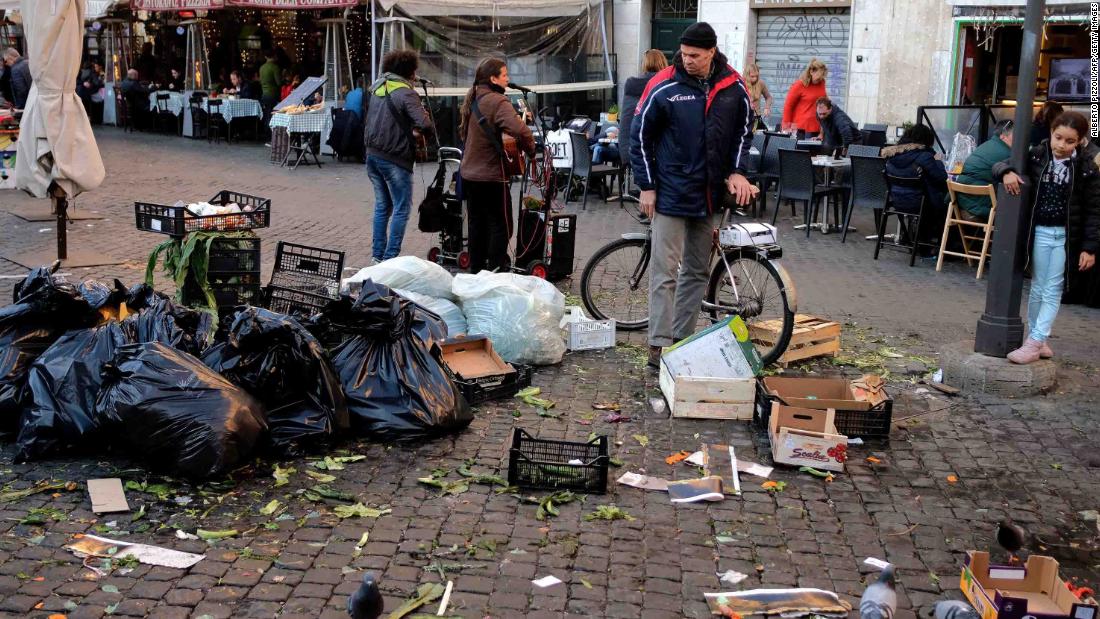
Rome has been suffering from a chronic rubbish collection issue since Christmas Eve.
So dire is the situation that a group of city activists who work under the banner "Roma Fa Schifo" (Rome is Disgusting) chronicle the degradation on a website and Twitter feed with more than 150,000 followers.
This city is also lately filled with migrants who suffer from a recent backlash that is pushing right-wing anti-immigration parties to the forefront ahead of Sunday's elections.
Rome has no official center for migrants waiting for word on their political asylum requests, so many camp out near the main train station or settle in any number of shanty towns that have sprung up along the banks of the city's Tiber River.
In January, CNN visited an abandoned multi-story university building known to its inhabitants as the Selam Palace, where nearly 1,000 Ethiopian, Eritrean and Somali refugees who have been granted legal refugee status squat illegally because the city can't find legitimate housing. There are more than 50 other abandoned office buildings just like it throughout the city.

Migrants warm up around a fire at a makeshift camp in Rome in February.
Donatella D'Angelo, a medical doctor with a nongovernmental organization called Cittadini Del Mondo (Citizens of the World), visits the center once a week to provide basic health care.
"It is unthinkable that a European capital treats refugees and migrants like this," she told CNN while volunteers cobbled together wires with duct tape so she had enough light to treat patients. "This is Rome? This is the best we can do?"
A frozen city
On Monday morning, a dusting of snow brought the city to a complete standstill, closing schools for two full days and paralyzing traffic. The city's buses had to be called back to the depot after it was confirmed that the city government had apparently overlooked funding for all-weather tires.
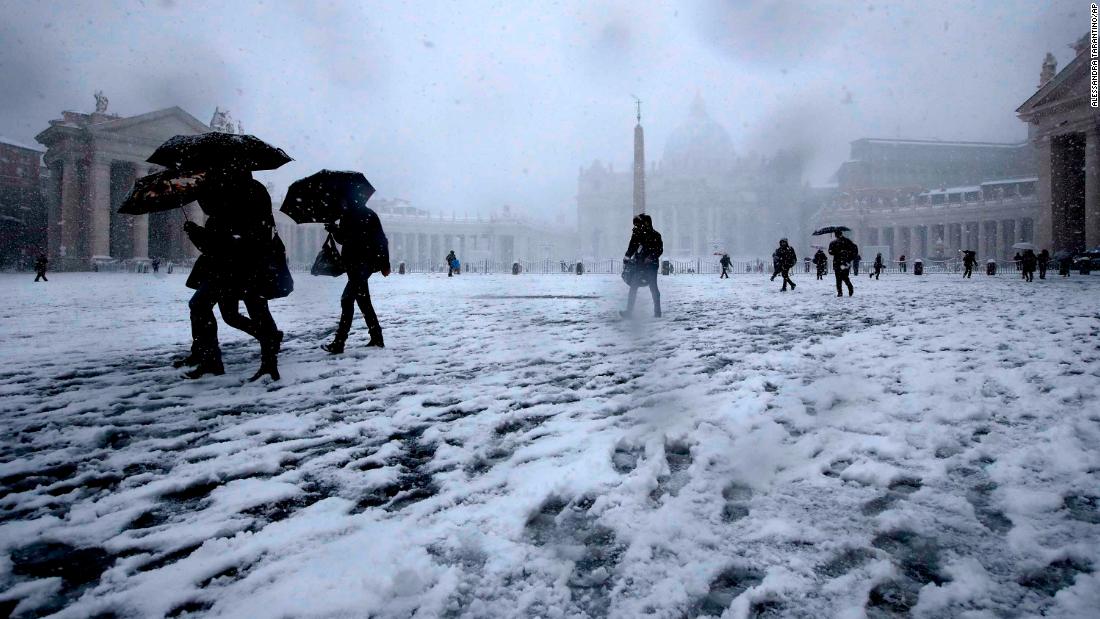
Romans trudge through the snow in St. Peter's Square on Monday.
The last time it snowed, in 2012, a similar fiasco ensued when it was discovered that the snow blades meant to be clipped on to garbage collection trucks were the wrong size. It was soon apparent that promises to fix that problem had been forgotten when the army had to be called in to remove the slushy snow from the streets to try to get the buses running again. The snow blades are still rusting in an abandoned parking lot near the Baths of Caracalla.
Those businesses that did open had to resort to using table salt to keep their clients from slipping in the slush. With an absence of snow shovels or city clean-up crews, workers used anything they could find, from serving trays to pieces of cardboard, to clean the sidewalks.
Berlusconi: Facing a new crisis, Italians turn to an old warhorse
Several trees that had not been properly pruned and trimmed last autumn collapsed under the weight of the snow, one falling next to children throwing snowballs in a park in the neighborhood of Testaccio near the city center. Another untrimmed tree fell onto a light rail line near Rome's ancient Aurelian walls, blocking what had been the only means of above-ground public transportation in the entire city.
Melting snow turned subway stairs into waterfalls, and the average wait for trains out of Rome while crews worked to clear the tracks was just over two hours.
Romans did as they always do, just shrugging it off and meeting for coffee to complain, which is a favorite, and often justifiable, pastime. A group of older men sitting in the Linari coffee bar in Testaccio argued Monday morning about solutions for the mess Rome finds itself in.
"Mussolini would have had these streets clean by now," said one man as he sipped a creamy cappuccino. "We need order in this country again, a stronger hand to put things back in place."
Blame game continues
In fact, much of the blame for Rome's current state of disrepair has been cast on Mayor Virginia Raggi, the first female ever to lead the eternal city, and the first member of the maverick Five Star Movement (M5S) political party to be given charge of such an important municipality.
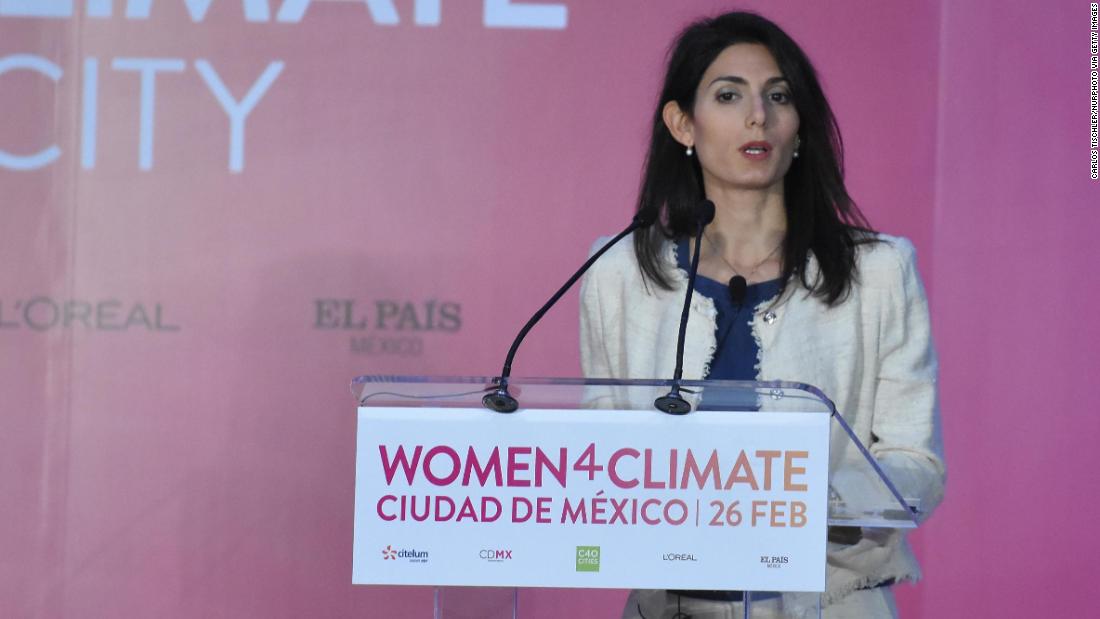
Virginia Raggi was criticized for being in Mexico during this week's storm.
When the snow fell on Monday, she was ridiculed for being in Mexico for talks about climate change. She certainly couldn't have foreseen the inclement weather, but she is being blamed for not having the measures in place just in case. Criticism against her and her party trended all day.
The populist M5S is polling ahead of all the other single parties ahead of the upcoming elections. The party has previously ruled out forming a coalition, which makes it unlikely that it can attain power, although it has suggested in recent days that it may have changed its stance.
Why Italy's unpredictable election is testing nerves in Europe
Its charismatic leader, 31-year-old Luigi Di Maio, a former waiter with scant government experience, believes that M5S could still pull off a surprise victory when it becomes apparent to voters that the alternatives are a right-wing coalition led by Silvio Berlusconi that includes neo-fascist parties, or the largely divided center-left.
Raggi won Rome, in part, on the promise to rid the city of corruption, a mantra of the party first introduced by M5S founder and comedian Beppe Grillo, who vowed to rid Parliament of criminals. Never mind that several of Raggi's cabinet members have so far had to resign amid accusations of the very corruption she is supposed to be fighting, and that the mayor herself is under investigation for abuse of office and giving false testimony in the investigation of one of her associates.
Raggi denies the allegations, but her record as mayor has given ammunition to some M5S opponents who say the anti-corruption party is no better than anyone else, and that its record in Rome proves it is not ready or able to lead.
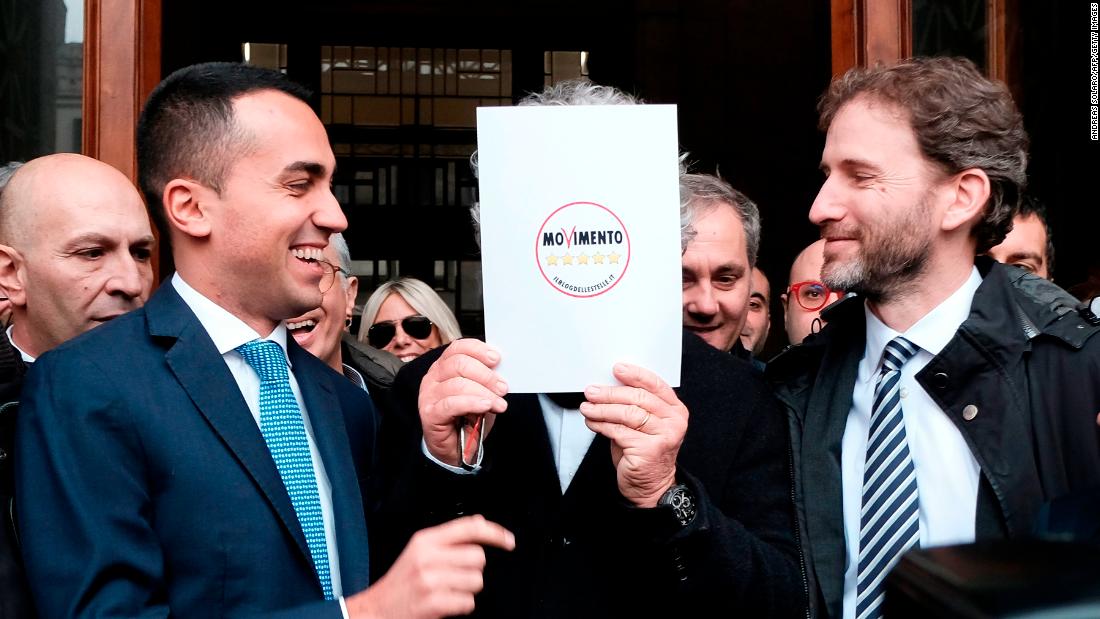
Luigi Di Maio (L) jokes with M5S founders Beppe Grillo (hidden) and Davide Casaleggio (R) in January.
But Raggi is not the first troubled Roman mayor. Her predecessor, Ignazio Marino, a member of the center-left Democratic Party, resigned in shame after being investigated for embezzlement, fraud and forgery tied to an expense receipt scandal -- charges first lodged by the Five Star Movement party. He was eventually cleared.
Before him, Rome's mayor was Gianni Alemanno, a member of Berlusconi's center-right Forza Italia party, who was tried for Mafia collusion after it was alleged he accepted more than 125,000 euros ($152,280) from mobster Salvatore Buzzi, the leader of the so-called Mafia Capitale organized-crime ring. Alemanno was eventually cleared, too, but the scandals clearly took their toll on the city.
Terminal decline?
Buzzi, along with Massimo Carminati and nearly 40 others, was found guilty and sentenced to prison in 2017 for pocketing public-works money from Rome's coffers for years. But when the criminal network was dismantled, the city fell apart.
The contracts for waste management had to be reissued, and proved too expensive for legitimate companies to carry out the work for the same price the mob-related companies had, creating a garbage crisis in many Roman neighborhoods.
The commissioner of the city bus company was also forced to resign, which has caused a variety of problems. The new commissioner requires bus drivers to punch a time clock and be accountable, and many drivers took part in strikes and drove their routes very slowly in protest.
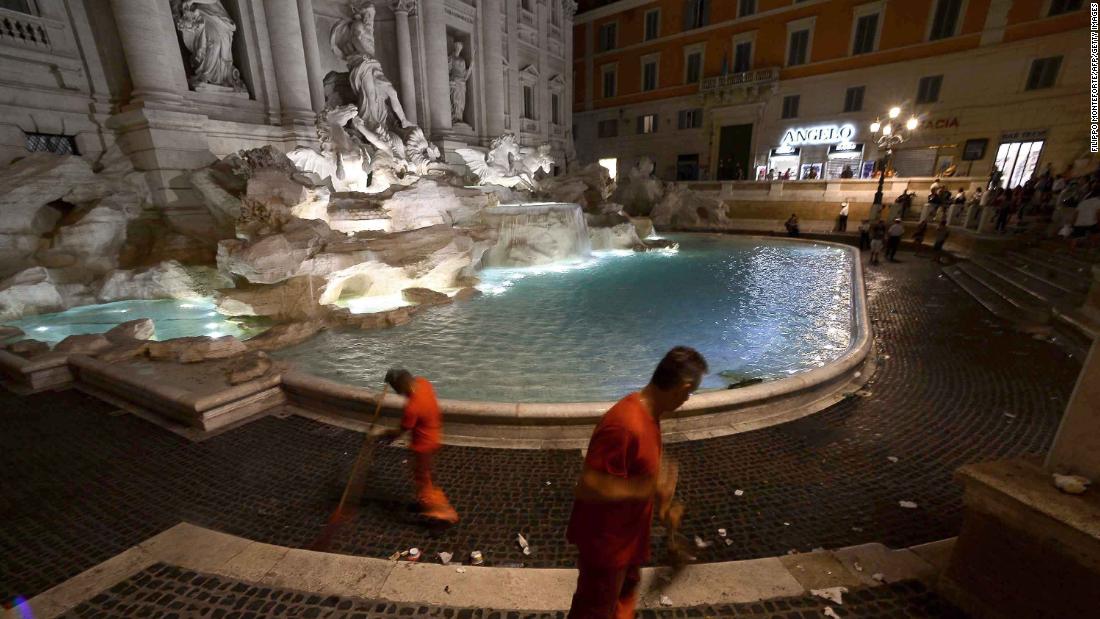
A worker with the municipal rubbish collection company cleans the floors of the Trevi Fountain in August 2016.
The vacuum created by cleaning up the mafia mess contributed to the sad state of the Italian capital today. And in many ways, Rome was nearly ruined by attempts to save it.
"Rome has suffered from being an ideological showcase," Matthew Kneale, a historian and author of Rome: A History in Seven Sackings, told CNN.
"Popes, emperors, the kings, Mussolini -- they all wanted to use it to display their ideology. Now it is less about the architecture, but it is still a trophy to be fought over to show ideological supremacy."
Kneale said that because Rome is largely a parasitical city, reaping the benefits of its past for more than 2,000 years rather than carving out a sustainable future, its success or failure surely cannot be an accurate measure of anyone's ability to govern.
"Rome has quite a long standing history of corruption," he says. "Rome's extraordinary past, that has made it a center of pilgrimage, tourism and government, has allowed it to survive despite some wholly and often corrupt inept rulers."
News Courtesy: www.cnn.com

